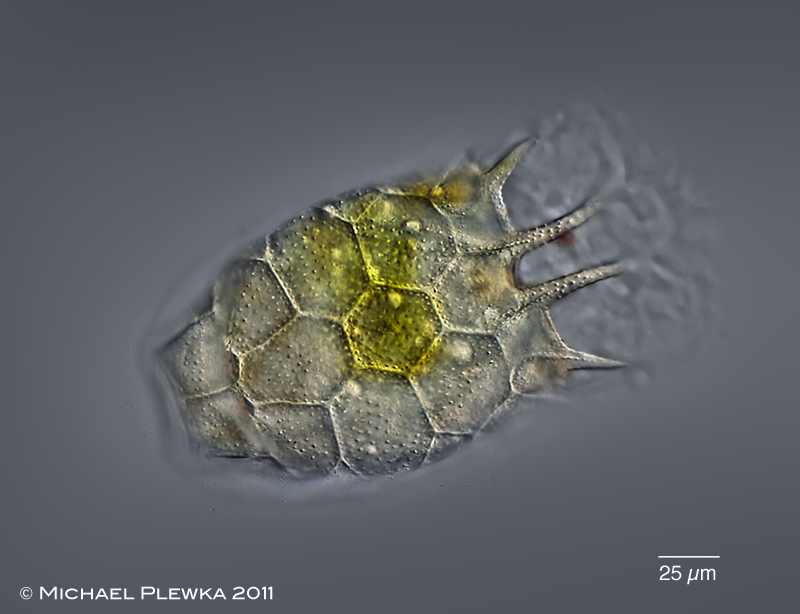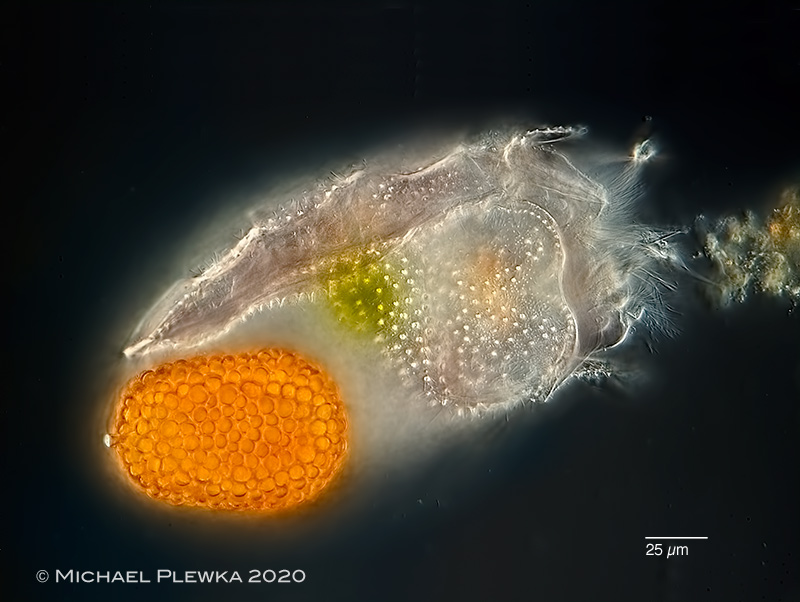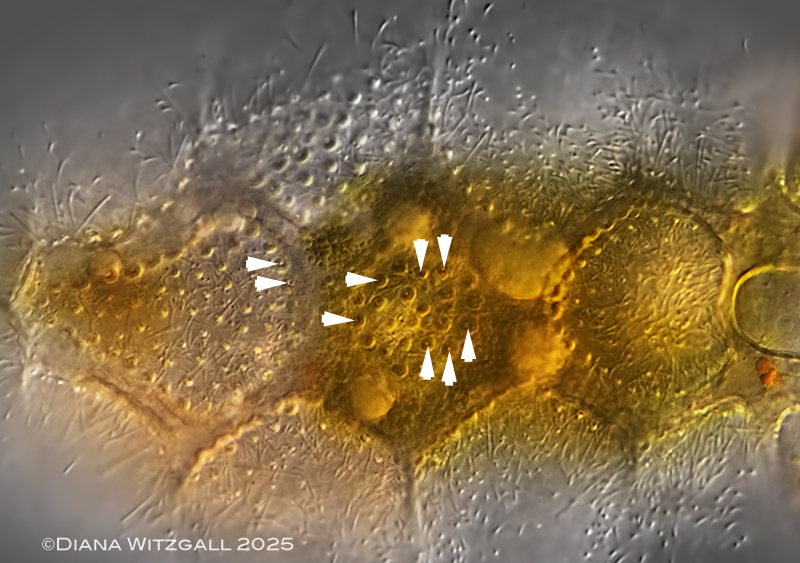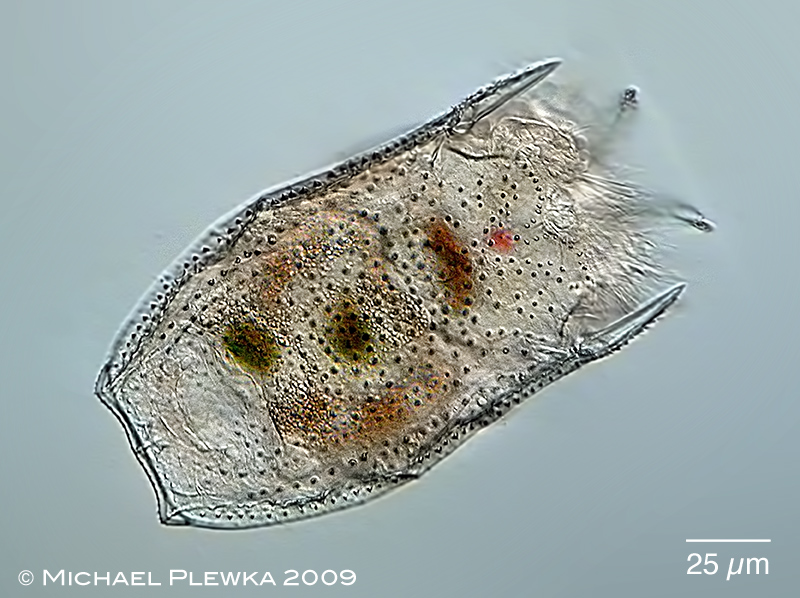| Keratella serrulata; focal plane on the ventral side of the lorica showing the granulated surface. In contrast to K. serrulata curvicornis this taxon has two spines at the posterior part of lorica. |
| |
 |
| Keratella serrulata; specimen with a resting egg; lateral view. This type of egg is produced when the environment conditions get worse. The resting eggs can survive bad conditions, eg. winter time or dry seasons. The lorica of this specimen is covered with filamentous structures (see below). |
| |
 |
| Keratella serrulata; compressed specimen; focal plane on the dorsal side of the lorica showing the pattern of the facets. (1) |
| |
 |
| Keratella serrulata; focus plane on the mictic egg. This species was one of two (the other one was Cephalodella ventripes) which were found in this environment of rotten Sphagnum-leafs (2) |
| |
 |
| Keratella serrulata; another specimen; from (3). Also the lorica of this specimen is covered with hair-like structures. (3) |
| |
|
Keratella serrulata; upper image: hair-like structures with distinct tips from the first specimen depicted here from location (1)
Lower image: closeup of the same hair-like structures from specimen from sample (3), which also have a distinct tip (arrowheads).
The question is: are these structures are bacteria or excretions from the pores in the integument (see below)? (3) |
| |
 |
| Keratella serrulata; closeup of the dorsal facets of the lorica. The integument is covered with wart-like structures with pores which are the exits of the secretory bulbs located in the cytoplasm of the syncytial inntegument. The hair-like structures might be secretions of these bulbs (like the secretions on the integument of Dissotrocha macrostyla), but this is uncertain at the moment. Simillar hair-like structures have also been observed in the bdelloid rotifer Macrotrachela plicata. (3) |
| |
| Images of specimens from sample (3) courtesy of Diana Witzgall, microscopia.de. |
| |
| |
 |
| Keratella serrulata; specimen without spines at the posterior part of the lorica. These variations of the lorica may be dependent on environmentall conditions. |
| |
| |
| Location: Nature reserve Heiliges Meer (1); Venner Moor, NRW, Germany (2); Lindauer Moor, BY, Germany (3); Bargerveen, NL, |
| Habitat: Sphagnum-pond (1); (4); Sphagnum- detritus (2); pond (3); 02.05.2009 (4) |
| Date: 16.04.2011 (1); 22.04.2020 (2); 05/2025 (3) |
|